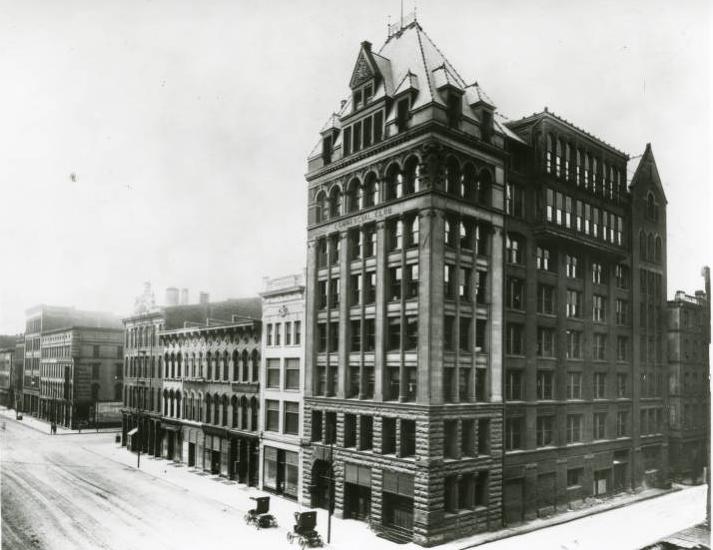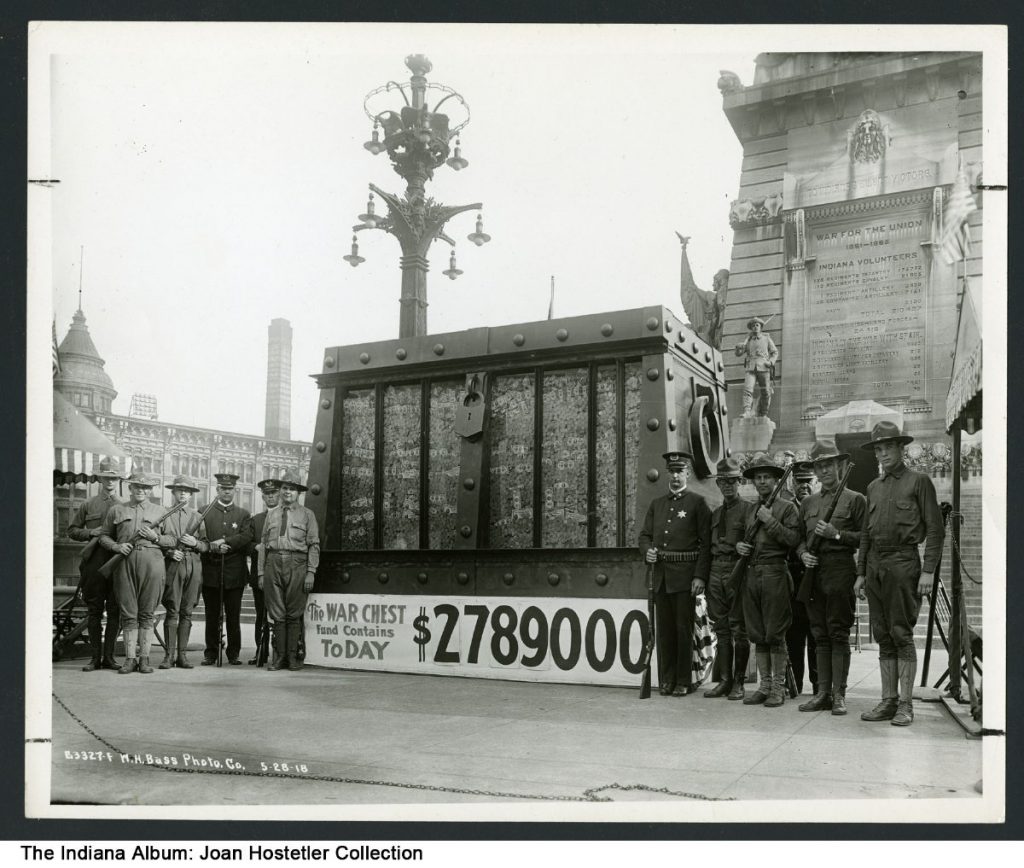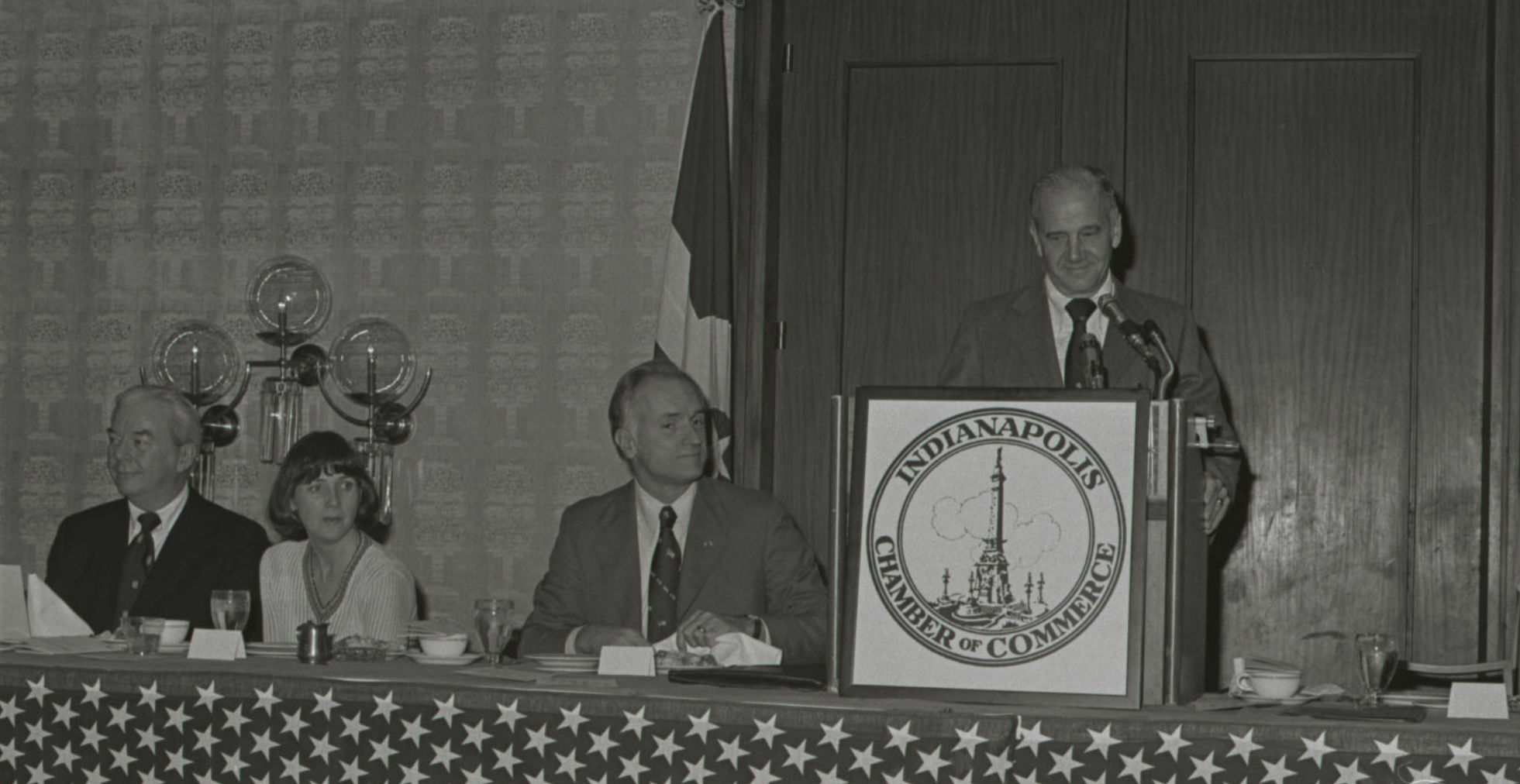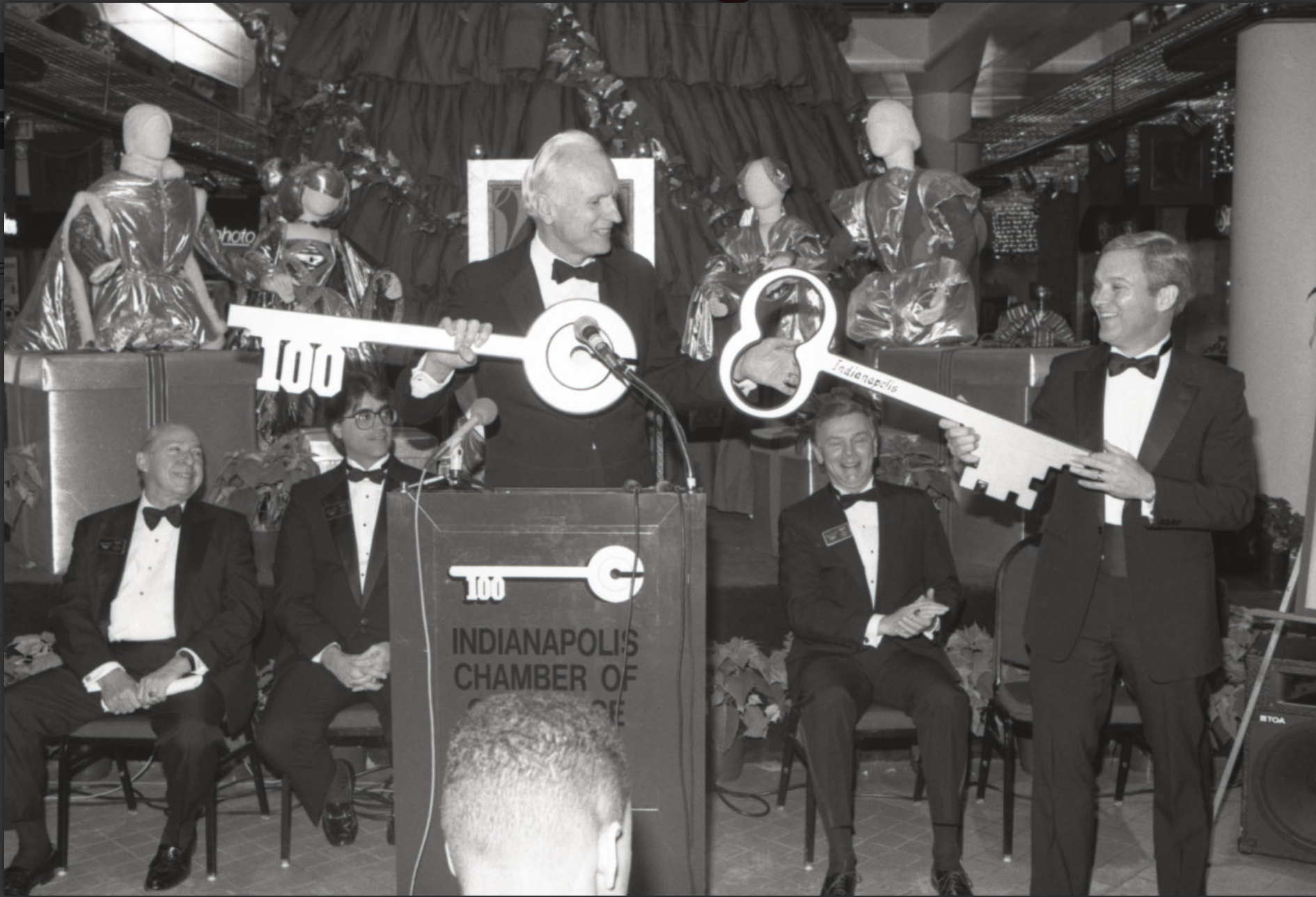Early organizations to promote economic growth in Indianapolis were the , founded in 1853 and later reorganized in 1857 and 1870, and a short-lived Chamber of Commerce (1864-1870). During the late 1880s, some members of the Board of Trade believed a more active and forward-looking group was necessary for expanding local development. These men worked with other civic leaders around the city to form the Indianapolis Commercial Club in February 1890.

Indianapolis Commercial Club
The Commercial Club was a business association focused on the promotion of local commercial and manufacturing interests as well as the general welfare of Indianapolis. was elected as the club’s first president, and reporter was elected as the first secretary.
Interest in the new organization was immediate. Only a month after its founding, the Commercial Club had 1,000 members. They paid annual dues of $3 and were also required to buy stock in the amount of $10.
Throughout the 1890s, the Commercial Club was involved in various city development activities. One of the organization’s first ventures was a in April 1890, the first of its kind in the United States. Paving products showcased at this event were used to improve Indianapolis’ streets the following year.
Another project for the organization was rewriting the City Charter. Revisions, which were modeled after the recently adopted charters of Brooklyn, New York, and Philadelphia, Pennsylvania, were drafted in collaboration with the Board of Trade, Indianapolis mayor , and other civic leaders. After submitting the revised charter to the Indiana General Assembly, the group lobbied the legislature for approval, which was achieved in March 1891.
Under the 1891 charter, the city’s bicameral legislative system of alderman and a common council was replaced with a strong mayor-council form of municipal government. Authority was divided among the separate executive, legislative, and judicial branches with administrative responsibilities being concentrated in the office of the mayor. This organizational structure differed from previous by increasing the mayor’s decision-making power.
While the Charter of 1891 would later be amended, it remained the basis of municipal government in Indianapolis for almost 80 years. The Commercial Club’s involvement in the creation of this document foreshadowed the organization’s involvement in future political matters.
Other Commercial Club projects during this period included public works improvements, the creation of a city park system, and the attraction of various national conventions to Indianapolis, including for the (GAR) in 1893. That same year, the Commercial Club constructed its headquarters at 30 South Meridian Street.
Indianapolis Chamber of Commerce
In December 1912, the Commercial Club merged with a number of other booster-minded organizations and changed its name to the Indianapolis Chamber of Commerce. The Chamber continued many of the activities of its predecessor, such as persuading new industries to come to the city and influencing local and state legislation.

The organization also assisted residents and businesses during periods of conflict, trouble, or distress. During the Great Flood of 1913, the Chamber provided relief to victims and later contributed to the establishment of a statewide flood commission to address future disasters.
In the years of World War I, the Chamber of Commerce served as an important part of the nation’s defense system. Its main task was the integration of Indianapolis industries in the production of needed war materials. The organization also worked with the Red Cross to establish the Indianapolis War Chest, which concentrated on war relief and local fundraising campaigns, in 1918.
During the 1920s, Chamber activities became increasingly tied to the new manufacturing and retail enterprises of the city. To better promote these businesses, the Chamber organized in 1921 and 1924. These events, held at the , showcased local manufacturers from a variety of industries, including automobiles and automobile accessories, clothing, food products, furniture, meatpacking, metal trades, pharmaceuticals, and retail.
Other boosterism efforts from this period focused on transportation. In addition to promoting Indianapolis’ booming , the Chamber contributed to the city’s growth in . After helping establish in 1926, the organization worked with the City of Indianapolis to develop the Indianapolis Municipal Airport (now known as the ).
Indianapolis’ economic prosperity during the 1920s was reflected in the Chamber’s soaring membership, including among women, who were first admitted in 1920. To accommodate this growth, the organization moved its headquarters into the newly constructed in 1926.
During the Great Depression, Chamber activities shifted back to relief efforts. In 1930, the organization developed an Emergency Work Committee that designed a system of public works to provide jobs and relief. Despite a dramatic decrease in its own membership during this time, the organization offered this service until local efforts were replaced by federally funded programs in 1933.
In 1941, the Chamber of Commerce linked local manufacturers with government contracts at the outset of the country’s entrance into . These contracts, worth more than $600 million, were an essential factor in placing Indianapolis at the forefront of war production as well as bringing the city out of economic blight.
During the early postwar period, one of the Chamber’s biggest initiatives was infrastructure. Following the adoption of the Federal Aid Highway Act of 1956, the organization became one of Indianapolis’ leading advocates for interstate highway construction. It worked with other supporters to determine the location, demolition, and access points of five major interstates within the city.

The postwar era in Indianapolis was also a period of suburbanization and inner-city blight. These developments led the Chamber of Commerce to focus its energy on a variety of revitalization efforts throughout the 1960s, 1970s, and 1980s. One of these efforts was the group’s support of , which resulted in a consolidated city-county government throughout most of Indianapolis and Marion County.
A number of projects, including the construction of the , , , and , were also supported during this time. The Chamber worked in partnership with numerous local organizations to advocate for these initiatives, including the (GIPC), , , , Indianapolis Economic Development Corporation (now known as ), Indianapolis Convention and Visitors Association (now known as ), and .

In 1990, the Chamber of Commerce celebrated its 100th anniversary. A series of public events were held highlighting the organization’s longtime commitment to economic development, education, public health, infrastructure and transportation, advocacy, and corporate philanthropy.
Such commitments continued into the 2000s and 2010s as the organization supported several new projects in Indianapolis, including the construction of , JW Marriott, and ; the city’s hosting of ; and the development of bus rapid transit (BRT) at .
In response to the COVID-19 pandemic, the Chamber of Commerce created an online Rapid Response Hub with information about employment opportunities, reopening guidelines, and financial relief resources from federal, state, and local providers. The Chamber served as one of these providers through its own “Rapid Response Loans,” which offered short-term working capital (ranging from $1,000 to $25,000) to local businesses impacted by the pandemic.
Today, the Indianapolis Chamber of Commerce (often shortened to Indy Chamber) continues its long-standing mission of influencing, developing, and maintaining a favorable business climate in Central Indiana. Major initiatives that support this effort include:
- Develop Indy-an economic development organization within the Chamber focused on business attraction, retention, and expansion in Indianapolis and Marion County
- Indy Partnership—an economic development organization within the Chamber focused on the promotion of workforce, industry, and growth opportunities for nine Central Indiana counties: Boone, Hamilton, Hancock, Hendricks, Johnson, Madison, Marion, Morgan, and Shelby
- Anchor Institution Strategies—an economic development plan utilizing local anchor partners (e.g., cultural attractions, hospitals, universities) to help revitalize neighborhoods and rebuild the urban economic base across Marion County
- Central Indiana Women’s Business Center (CIWBC)—a cooperative program in partnership with the U.S. Small Business Administration designed to promote the creation and growth of businesses by women entrepreneurs
- ReEntry Entrepreneurship Development Initiative (REDi)—a cooperative program in partnership with the U.S. Small Business Administration designed to provide technical business training and education to incarcerated and formerly incarcerated individuals
- Hispanic Business Council (HBC)-a leadership group focused on growing the Hispanic business community in Central Indiana through networking events, bi-lingual business coaching, and mentor-based educational programs
- Advocacy—an ongoing effort to gain legislative support for annual Chamber priorities
Outside of these major initiatives, Indy Chamber offers numerous educational workshops, business coaching sessions, and networking events throughout the year. Despite being a membership-based organization, many of these resources are available to the entire community.

Help improve this entry
Contribute information, offer corrections, suggest images.
You can also recommend new entries related to this topic.